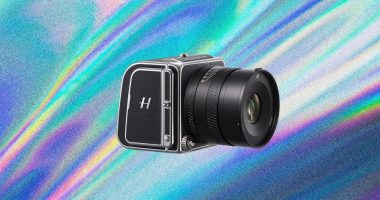NASA’s latest Mars rover is done with its testing and has embarked on its first scientific mission. After landing on the planet in February, the Perseverance rover has been busy trying out its many instruments—converting atmospheric carbon dioxide into oxygen that would be needed for manned missions, flying a helicopter and taking photos.
SHARE YOUR THOUGHTS
Which exploration projects should NASA prioritize and why? Join the conversation below.
Now, it will begin its mission: looking for evidence of life. Over the coming months, it will use a variety of sophisticated instruments to scan the planet’s Jezero Crater for places of interest, drill into rocks and soil, and collect specimens to be retrieved and brought to Earth by future spacecraft.
High-tech tool kit
The rover is packed with 23 cameras, sensors, a laser and a drill-equipped robotic arm. NASA scientists will spend the next two years using the instruments to learn more about Jezero Crater and home-in on areas they might like to study in greater depth.

Primary instruments
Mastcam-Z
Zoomable panoramic cameras
SuperCam
Laser micro-imager
MEDA
Weather sensors
SHERLOC
Ultraviolet spectrometer
RIMFAX
Subsurface radar
PIXL
X-ray spectrometer
Coring drill
Rotary percussive drill
6-foot person

Primary instruments
SuperCam
Laser micro- imager
Mastcam-Z
Zoomable panoramic cameras
MEDA
Weather sensors
SHERLOC
Ultraviolet spectrometer
PIXL
X-ray spectrometer
Coring drill
Rotary percussive drill
RIMFAX
Subsurface radar
6-foot person

Primary instruments
Mastcam-Z
Zoomable panoramic cameras
SuperCam
Laser micro- imager
MEDA
Weather sensors
SHERLOC
Ultraviolet spectrometer
PIXL
X-ray spectrometer
Coring drill
Rotary percussive drill
RIMFAX
Subsurface radar
6-foot person
The two zoomable cameras that make up the rover’s Mastcam-Z imager survey the terrain. The SuperCam laser is being used to detect rocks’ chemistry. The rover gathers more detailed chemical and mineralogical information using the spectrometers on its arm instruments: the Planetary Instrument for X-Ray Lithochemistry, or PIXL, and the Scanning for Habitable Environments With Raman and Luminescence for Organics and Chemicals, or Sherloc.
The rover is equipped with a computer processor running at up to 200 megahertz, slow compared with a modern computer. It also has communications equipment, internal temperature controls and a large battery in the rear to ensure it has plenty of power.
Safe storage
One of Perseverance’s main jobs is collecting rock and soil samples. The rover is carrying 43 sample tubes and five witness tubes, used to ensure sample tubes aren’t corrupted. The large robotic arm transports the sample tube inside the belly of the vehicle. There it is moved by the smaller sample-handling arm to be processed. The sample’s volume is measured, an image of the sample is taken, and the tube is hermetically sealed. The tubes will later be deposited on the Martian surface in what NASA calls a sample cache depot. The depot’s coordinates will be recorded based on landmarks and measurements from Mars’ orbiting satellites.

Collecting samples
Sample
tube
1. Rover’s 7-foot-long robotic arm drills about 2 inches into the soil to gather core samples or rock from promising areas and collects them into sample tubes.
2. Samples are placed in a storage rack inside the rover and sealed.
3. It carries the sealed tubes until it finds an appropriate place on Mars to deposit them, to be retrieved by a future mission.

Collecting samples
1. Rover’s 7-foot-long robotic arm drills about 2 inches into the soil to gather core samples or rock from promising areas and collects them into sample tubes.
2. Samples are placed in a storage rack inside the rover and sealed.
Sample
tube
3. It carries the sealed tubes until it finds an appropriate place on Mars to deposit them, to be retrieved by a future mission.

Collecting samples
1. Rover’s 7-foot-long robotic arm drills about 2 inches into the soil to gather core samples or rock from promising areas and collects them into sample tubes.
2. Samples are placed in a storage rack inside the rover and sealed.
Sample
tube
3. It carries the sealed tubes until it finds an appropriate place on Mars to deposit them, to be retrieved by a future mission.

Sample collection tube
Serial number
Core samples
Tubes gather samples of about 0.5 x 2.4 inches, averaging about 0.4- 0.5 ounces a tube.
Alumina coating
Titanium nitride coating

Sample collection tube
Titanium nitride coating
Serial number
Alumina coating
Core samples
Tubes gather samples of about 0.5 x 2.4 inches, averaging about 0.4- 0.5 ounces a tube.

Sample collection tube
Titanium nitride coating
Serial number
Alumina coating
Core samples
Tubes gather samples of about 0.5 x 2.4 inches, averaging about 0.4- 0.5 ounces a tube.
Witness tubes are similar to the collection tubes but used to ensure the integrity of the Martian samples. They are preloaded with material designed to trap molecular and particulate contaminants. Like the sample tubes, they will be opened and sealed on Mars as a recording of the ambient environment.
Possible route of exploration
Able to cover ground three times faster than any previous Mars rover, Perseverance will be exploring a 28-square-mile area in the planet’s northern hemisphere, Jezero Crater. NASA said scientists think that approximately 3.5 billion years ago, a river flowed into a lake the size of Lake Tahoe in the crater, making it a good candidate for finding signs of past life on the planet.

3. Three Forks
Once the rover completes the first leg of its exploration, it will travel north to an area called Three Forks, an ancient fan-shaped delta. The rover may possibly even ascend the delta, driving up a valley wall.
Second campaign
Octavia E. Butler
landing site
1. Séítah
Perseverance’s first stop will be at Séítah-North, where it can view the entire Séítah unit from an overlook.
First campaign
2. Crater Floor Fractured Rough
The rover will examine whether it’s necessary to explore further south.
Possible areas
of exploration
500 meters

Second campaign
Octavia E. Butler
landing site
First campaign
Possible areas
of exploration
1,000 yards
1,000 meters
1. Séítah
Perseverance’s first stop will be at Séítah-North, where it can view the entire Séítah unit from an overlook.
2. Crater Floor Fractured Rough
The rover will examine whether it’s necessary to explore further south.
3. Three Forks
Once the rover completes the first leg of its exploration, it will travel north to an area called Three Forks, an ancient fan-shaped delta. The rover may possibly even ascend the delta, driving up a valley wall.

Second campaign
Octavia E. Butler
landing site
First campaign
Possible areas
of exploration
1,000 yards
1,000 meters
1. Séítah
Perseverance’s first stop will be at Séítah-North, where it can view the entire Séítah unit from an overlook.
2. Crater Floor Fractured Rough
The rover will examine whether it’s necessary to explore further south.
3. Three Forks
Once the rover completes the first leg of its exploration, it will travel north to an area called Three Forks, an ancient fan-shaped delta. The rover may possibly even ascend the delta, driving up a valley wall.
When Perseverance returns to the landing site, completing its first science campaign, it will have traveled up to 3 miles. The rover will then journey north and west to Jezero’s delta region, a fan-shaped area where the ancient river flowed into the lake. NASA hopes to find carbonates, minerals that can preserve fossilized signs of life.
Copyright ©2020 Dow Jones & Company, Inc. All Rights Reserved. 87990cbe856818d5eddac44c7b1cdeb8









